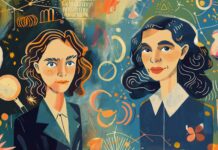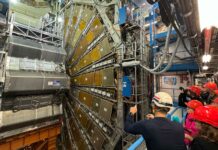Since the 1990s, when a group of scientists launched the website Kvarkadabra.net and started to answer various questions, the mission of Kvarkadabra has been to bring the mysteries of the natural sciences closer to the widest possible population in Slovenia.
In recent years Kvarkadabra activities have quickly expanded – it has become more and more busy answering various questions on natural science from the many curious readers on the website, debating in the university, giving lectures to a broad audience in student clubs and contributing to the production of TV series.
The first book prepared by Kvarkadabra was Why is the Sky Blue? (published by Krtina), which contained 119 questions and answers submitted by readers of the website, varying from the latest, still hypothetical discoveries in the world of the atom to speculations about the future of the universe. The Kvarkadabra team did not limit their answers only to narrow specialisation, but also offered a complete scientific or technical vision of the issue. This was followed by Kvarkadabra Goes to the Cinema – Essays on Science in Film and Life (also published by Krtina), and Sašo Dolenc’s Darwin’s Dangerous Idea and Other Stories about the Universe, People and Molecules (published by Studia humanitatis).
A service of Kvarkadabra, Society for Explaining Science, Kvarkadabra.net is a website resource for science which covers the fields of Astronomy, Physics, Biology, History, Chemistry, Philosophy, Technologya and Mathematics and also features a section on Interesting Books, plus Science Stories and Lectures. Since the 1990s the mission of Kvarkadabra when answering questions on their website has been to bring the mysteries of the natural sciences closer to the widest possible population in Slovenia, translating and interpreting the complicated language of science to those who are not fluent in it, but want to understand it. Its aim is not to teach, but to narrate and tell a story about how science began and the people who created it. Kvarkadabra was one of 33 nominees for the EU Descartes prize for Science Communication in 2007.
Exemplary Kvarkadabra… Why do short-sighted people see better when they squint? How does a microwave oven work? What is the twins paradox in relativity theory? The answer to these questions and to hundreds of others can be found in the amazing on-line journal known as Kvarkadabra, a jewel of scientific popularisation from Slovenia. Fuelled by around 15 passionate young researchers (biophysicists working side by side with chemists, mathematicians and philosophers), this site offers an animated, high-quality forum, book reviews, a scientific glossary, a look at research news and much more, such as a wide-ranging series of one-on-one conferences. The Slovenian language is no barrier to the dissemination of ideas. Why not be inspired by Kvarkadabra, and experience a wonderful example of sharing science? (Research – research*eu – Education – Special issue – June 2007)






